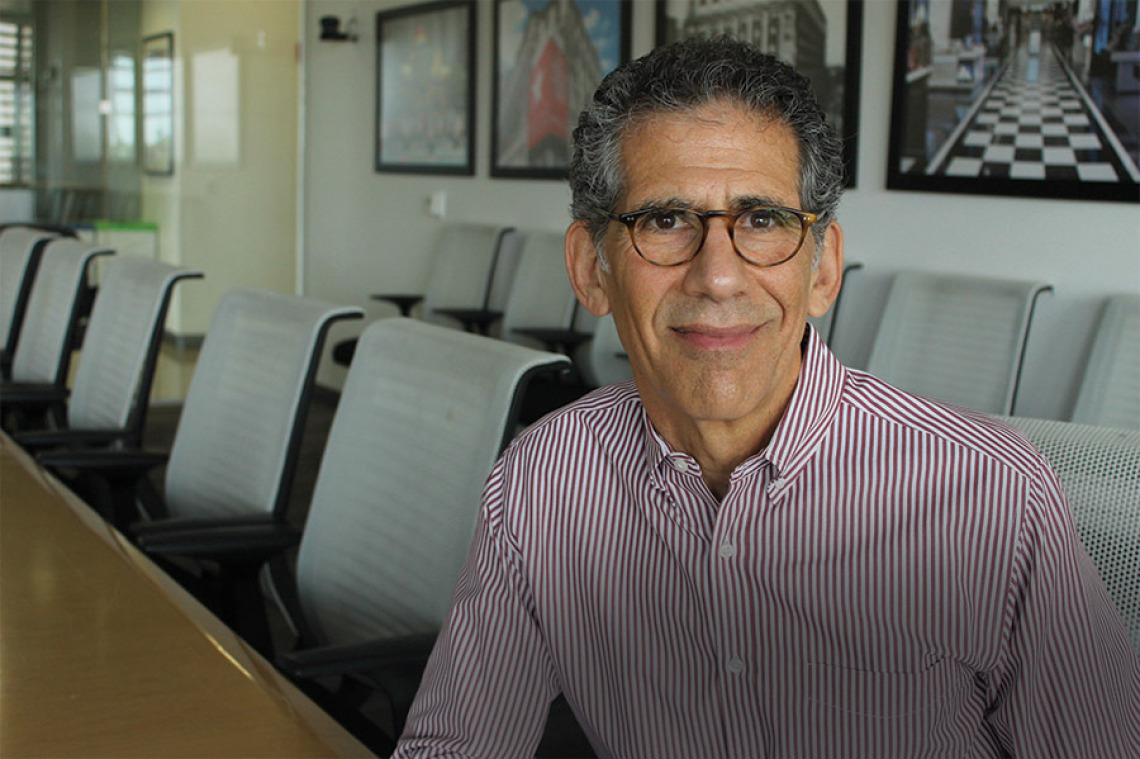Experts Explain: Rising inflation, a turbulent economy, and what people can do
Richard P. Rosen JD, associate professor of personal and family financial planning, talks about personal financial strategy in a time of economic uncertainty.

Rick Rosen is frank about inflation and the specter of recession: It’s going to be rough.
But Rosen, an associate professor and former chair of the Personal and Family Financial Planning program in the College of Agriculture, Life and Environmental Sciences Norton School of Human Ecology, said the economy will recover and that people can protect themselves financially in the meantime.
“Recessions aren’t necessarily bad,” Rosen said. “People tend to become a little more realistic in what they’re about, what their spending habits are. But it can be painful to get there.”
The Personal and Family Financial Planning program trains graduates to help people achieve financial goals, weathering both good times and bad. These days definitely qualify as bad, with inflation higher than in decades, Rosen said.
Anyone who filled up their gas tank recently or went to the grocery store already knows the feeling of high inflation. Inflation is essentially the general cost of living: the higher it is, the lower the purchasing power of money. You spend more but get less.
So how did we get here?
Pent-up demand, backed-up supply
The bottom line is people spent less during the pandemic. As the pandemic eased, many Americans were ready to spend their accumulated cash, but there was a problem: “The supply chain was a mess,” Rosen said. Manufacturing countries, like China, shut down entire cities to battle COVID, causing worldwide shortages of goods and raw materials. This was further exacerbated by sudden and extreme employee layoffs leading to serious supply issues with manufacturing and shipping as the constraints of COVID were lifted. As if that weren’t enough, Russia invaded Ukraine earlier this year. Sanctions against Russia disrupted oil and gas supplies, while a Russian blockade of Ukraine has stifled the export of wheat and coarse grains, causing food shortages and higher prices in much of the world.
“This is not an easy fix,” Rosen said. “It’s going to take time.”
Rosen said the Federal Reserve – an independent arm of the government, not a political body – has two key tools at its disposal to fight inflation: the federal funds rate and reserve requirements for banks.
The first, the funds rate, affects the cost of borrowing for banks, which borrow money nightly from the Federal Reserve so they can pay their bills, Rosen said. The higher the rate, the higher the cost for banks to borrow. Banks pass on that “cost of money” to businesses and individuals, and they cut back on providing loans, leading to a decrease in spendable assets for businesses and individuals.
In June, the Federal Reserve boosted the rate by a 0.75 percentage point, the highest jump in 40 years, then did it again in July. “The rate is expected to continue to rise into the fall”, Rosen said.
The other tool, reserve requirements, makes banks hold a certain percentage of their money as reserves, meaning it cannot be loaned out. The dilemma, Rosen said, is figuring out how far to tighten down inflation without sending the economy into a freefall.
“The best advice I can give is to realize inflation is here, and it’s going to be here for a while. And you have to do everything within your power to save where you can.”
As it is, Rosen and many economists believe a recession – when the value of the goods and services the nation produces (gross domestic product) declines for two consecutive quarters – is inevitable.
What actions can consumers take?
To understand the threat inflation poses, consider this: Nearly six in 10 Americans already don’t have enough savings to cover a $500 or $1,000 unexpected expense. And, with inflation increasing, the overall cost of that “unexpected expense” is also increasing
Rosen suggests that consumers focus on three big things to limit their expenses: oil and gas, food, and shelter. Some of the actions may seem obvious, but they still require discipline and changes in lifestyle.
What do you do when gas prices are high? “You don’t drive that much,” he said. That could mean mapping out a route and running errands all at once instead of a lot of separate trips. It could be riding a bike or walking to work. Or car-pooling or using public transportation. If the job allows it, ask to work remotely.
At home, it may be time to get a little uncomfortable, Rosen said. “Instead of having your house’s air conditioning at 68, move it up ... to 78,” he said. “Reverse that during the winter. That’s the time to put on a wool sweater, to put on wool socks. You can’t afford to heat or cool your house at the costs we’re going to see, and it’s going to remain astronomical for quite some time.”
Rosen said the same goes for going to restaurants. “I know that hurts some people, but let’s face it, we just went through Covid where we didn’t go out to eat at all,” he said.
Regarding housing, Rosen said this is probably not the right time to buy a house, with interest rates on the rise and prices still high because of the Covid slowdown in homebuilding and current supply chain issues.
“Hunker down, do your own fixing and repairing of things,” he said. The same goes for using credit cards. “If people are going to start borrowing money on their credit card and not have the ability to pay beyond the minimum payment each
month, they’ll never get out from underneath that,” he said.

